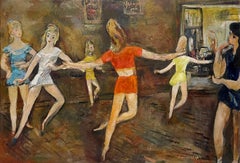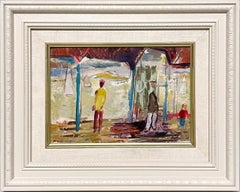Francis Chapin Art
Mid-20th Century American Modern Francis Chapin Art
Canvas, Oil
1950s Modern Francis Chapin Art
Paper, Pastel, Watercolor
1930s American Modern Francis Chapin Art
Masonite, Oil
Mid-20th Century American Modern Francis Chapin Art
Masonite, Oil
Mid-20th Century American Modern Francis Chapin Art
Masonite, Oil
1940s American Modern Francis Chapin Art
Canvas, Oil
Mid-20th Century American Modern Francis Chapin Art
Canvas, Oil
1950s American Modern Francis Chapin Art
Canvas, Oil
1950s American Modern Francis Chapin Art
Masonite, Oil
1950s American Modern Francis Chapin Art
Masonite, Oil
1930s American Modern Francis Chapin Art
Masonite, Oil
1940s American Modern Francis Chapin Art
Canvas, Oil
1940s American Modern Francis Chapin Art
Oil, Masonite
Mid-20th Century American Modern Francis Chapin Art
Masonite, Oil
1950s American Modern Francis Chapin Art
Masonite, Oil
1940s American Modern Francis Chapin Art
Canvas, Oil
1940s American Modern Francis Chapin Art
Masonite, Oil
Mid-20th Century American Modern Francis Chapin Art
Masonite, Oil
1930s American Modern Francis Chapin Art
Watercolor, Board
Mid-20th Century American Modern Francis Chapin Art
Oil, Canvas, Board
Mid-20th Century American Modern Francis Chapin Art
Canvas, Oil, Board
1950s American Modern Francis Chapin Art
Masonite, Oil
Mid-20th Century American Modern Francis Chapin Art
Canvas, Oil
Mid-20th Century Francis Chapin Art
Masonite, Oil
1930s American Modern Francis Chapin Art
Masonite, Oil
1930s American Modern Francis Chapin Art
Canvas, Oil
1950s American Modern Francis Chapin Art
Oil, Board
1950s American Modern Francis Chapin Art
Masonite, Oil
1930s American Modern Francis Chapin Art
Paper, Charcoal
1950s American Modern Francis Chapin Art
Paper, Charcoal, Pastel
Mid-20th Century American Modern Francis Chapin Art
Masonite, Oil
Mid-20th Century American Modern Francis Chapin Art
Canvas, Oil
1950s American Modern Francis Chapin Art
Paper, Pastel
1930s American Modern Francis Chapin Art
Canvas, Oil
1950s American Modern Francis Chapin Art
Paper, Charcoal, Pastel
1940s American Modern Francis Chapin Art
Masonite, Oil
1940s American Modern Francis Chapin Art
Masonite, Oil
1930s American Modern Francis Chapin Art
Oil, Board
1950s American Modern Francis Chapin Art
Pastel, Board
Mid-20th Century American Modern Francis Chapin Art
Watercolor, Archival Paper, Charcoal, Pastel
1930s American Modern Francis Chapin Art
Canvas, Oil
Mid-20th Century American Modern Francis Chapin Art
Masonite, Oil
1930s American Modern Francis Chapin Art
Masonite, Oil
1930s American Modern Francis Chapin Art
Oil, Board
1950s American Modern Francis Chapin Art
Canvas, Oil
Mid-20th Century American Modern Francis Chapin Art
Masonite, Oil
Mid-20th Century American Modern Francis Chapin Art
Masonite, Oil
1930s American Modern Francis Chapin Art
Paper, Watercolor
Mid-20th Century American Modern Francis Chapin Art
Masonite, Oil
Mid-20th Century American Modern Francis Chapin Art
Masonite, Oil
1930s American Modern Francis Chapin Art
Paper, Watercolor
1940s American Modern Francis Chapin Art
Paper, Watercolor
1940s American Modern Francis Chapin Art
Oil, Canvas
Mid-20th Century American Modern Francis Chapin Art
Masonite, Oil
Mid-20th Century American Modern Francis Chapin Art
Masonite, Oil
1950s American Modern Francis Chapin Art
Masonite, Oil
1930s American Modern Francis Chapin Art
Oil, Board
Mid-20th Century American Modern Francis Chapin Art
Masonite, Oil
Mid-20th Century American Modern Francis Chapin Art
Masonite, Oil
Mid-20th Century American Modern Francis Chapin Art
Paper, Pastel





